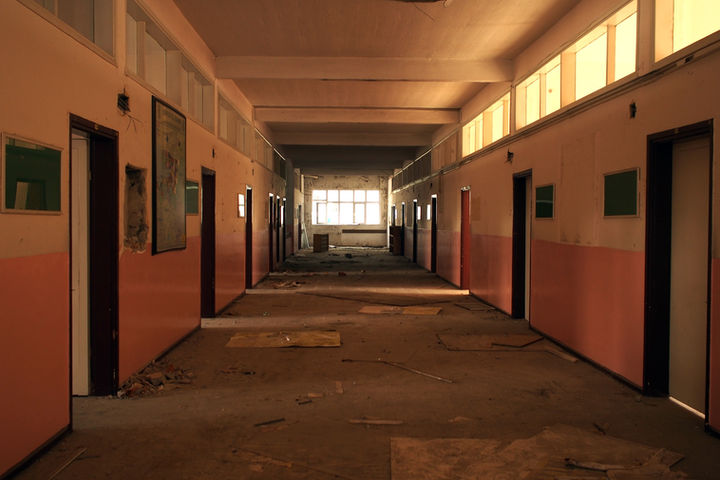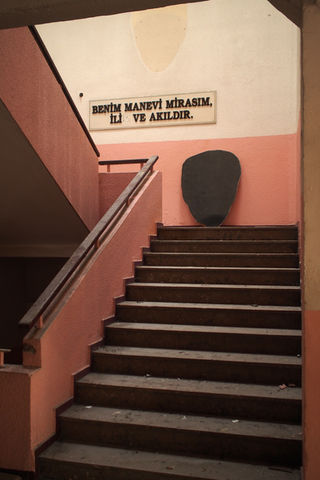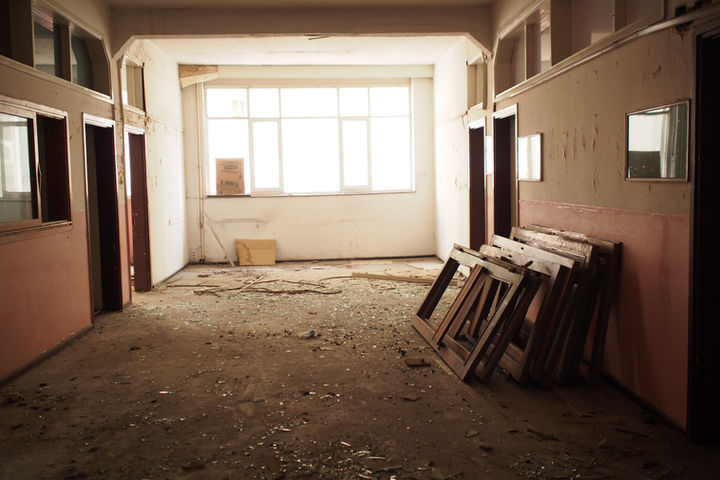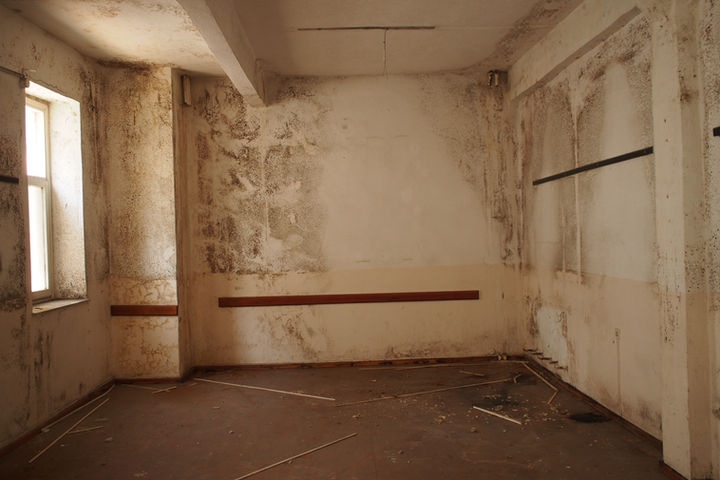IZMIR BUYUK DERSHANE
İZMİR BÜYÜK DERSHANE
Bir Binanın Çöküşüyle, Bir Sistem de Çöktü.
Bir zamanlar burada ışıklar yanardı.
Koridorlarda genç sesler yankılanır, her kapıdan geleceğe dair planlar fısıldanırdı.
Haritalar, başarı tabloları, deneme sonuçları…
Bu binada, "başarı" bir yerdi; gidilmesi gereken, ulaşılması gereken, kazanılması gereken.
Ama şimdi ne ışık var ne ses.
Sıvalar dökülmüş, merdivenler sessiz, panolar boş.
Ve o harita hâlâ duvarda asılı: İzmir’in her yanına yayılmış umutların kartografyası.
Bu fotoğraflar bir binanın yıkımına değil, bir sistemin sembolik çöküşüne tanıklık eder.
“İzmir Büyük Dershane” yalnızca fiziksel bir mekân değildi.
O, Türkiye’nin sınav odaklı eğitim yapısının merkezi, bir hayal makinesi, bir seçme-eleme düzeninin tapınağıydı.
Burada nice çocuklar “başarılı” olmanın ne demek olduğunu öğrenmeden önce, “başarısız olmanın” utancını yaşadı.
Burada genç zihinler, kendi potansiyellerinden çok puanlarının değerli olduğunu öğrendi.
Bu binanın içinde çok az çocuk gerçekten büyüdü; çoğu yalnızca yarıştı.
Ve şimdi bu sessizlik, bir tür hesaplaşmadır.
Yalnızca terk edilmiş bir yapı değil burası;
aynı zamanda terk edilen ideallerin, çöken sistemlerin, yorgun kuşakların mekânı.
Bazı duvarlar sadece taşla örülmez; inançla, vaatle, idealle örülür.
Bir karede, duvarda hâlâ okunabilen bir cümle göze çarpar:
“Benim manevi mirasım, ilim ve akıldır.”
Bu ülkenin kurucusu ve baş öğretmen Mustafa Kemal Atatürk’ün sözüdür bu .
Ama artık harfleri eksik, cümlesi tamam değil.
Altında yere düşmüş bir Atatürk portresi durur — zamanla solmuş, çerçevesiz, sessiz.
Bu yalnızca fiziksel bir düşüş değil; yüksekten yere indirilen bir düşüncenin, bir umudun ve bir yön duygusunun sembolik çöküşüdür.
O duvar ile yer arasında sıkışan şey, geçmişin idealleri ile bugünün gerçekliği arasındaki derin çatlakta yankılanır.
Bu proje, “başarının kutsandığı” ama neyin pahasına olduğunun sorulmadığı bir eğitim anlayışına karşı bir bellek eylemidir.
Çünkü her çöküş, ardında anlatılmamış hikâyeler bırakır.
Ve her fotoğraf, sessizliği görünür kılmanın bir yoludur.
Ben bu yapıya bir belgeselci gibi değil, bir tanık gibi baktım.
Fotoğraflar, yalnızca estetik değil; etik bir bakışın da izini taşır.
Çünkü harabelerde sadece geçmiş değil, bugünün yankısı da vardır.
“İzmir Büyük Dershane” projesi, yalnızca terk edilmiş bir binaya değil, terk edilmiş bir kuşağa da bakar.
Ve belki de bu sessizlik, yeni bir eğitim anlayışına kulak vermemiz için gerekli olan duraktır.
Ve belki de bu yüzden, en çok sessizlik konuşur bu karelerde.
Oğuz Nusret Bilik
IZMIR GRAND TUTORING CENTER
With the Collapse of a Building, a System Also Fell.
There was a time when lights were on here.
Young voices echoed through the corridors, and behind every door, plans for the future were whispered.
Maps, success charts, practice test results...
In this building, “success” was a destination — to be reached, achieved, conquered.
But now there is no light, no sound.
The plaster crumbles, stairwells are silent, noticeboards lie empty.
And that map still hangs on the wall: a cartography of hopes once spread across every corner of Izmir.
These photographs do not merely witness the destruction of a building,
but the symbolic collapse of a system.
“Izmir Grand Tutoring Center” was not merely a physical space.
It was the heart of Turkey’s exam-oriented education system — a dream machine,
a temple of selection and elimination.
Here, many children felt the shame of “failure”
before ever learning what “success” truly meant.
Here, young minds were taught that their test scores mattered more than their potential.
Very few children truly grew within these walls; most merely competed.
And now, this silence is a kind of reckoning.
This is not only an abandoned structure;
it is a space of abandoned ideals, collapsed systems, and weary generations.
Some walls are not built with bricks alone —
they are built with belief, with promises, with ideals.
In one frame, a sentence still clings to a wall:
“My spiritual legacy is science and reason.”
This is a quote from the founder of this country and the chief teacher, Mustafa Kemal Atatürk."
Now, the letters are faded, the sentence incomplete.
Beneath it lies a fallen portrait of Atatürk —
worn by time, frame gone, silent.
This is not just a physical fall,
but the symbolic collapse of an idea,
a hope, a sense of direction.
What lingers between the wall and the floor
is the echo of a rift between past ideals and today’s reality.
This project is an act of remembrance against an educational mindset
that glorifies “success” but never questions at what cost.
Because every collapse leaves behind untold stories.
And every photograph is a way of making silence visible.
I did not look at this space as a documentarian,
but as a witness.
These photographs bear not only aesthetic choices,
but an ethical gaze.
Because within ruins, it’s not only the past that resonates,
but also the haunting of the present.
The “Izmir Grand Tutoring Center” project does not only look at an abandoned building —
it looks at an abandoned generation.
And perhaps this silence is the pause we need to listen for a new vision of education.
And maybe that’s why it is silence that speaks the loudest in these frames.
Oğuz Nusret Bilik




















